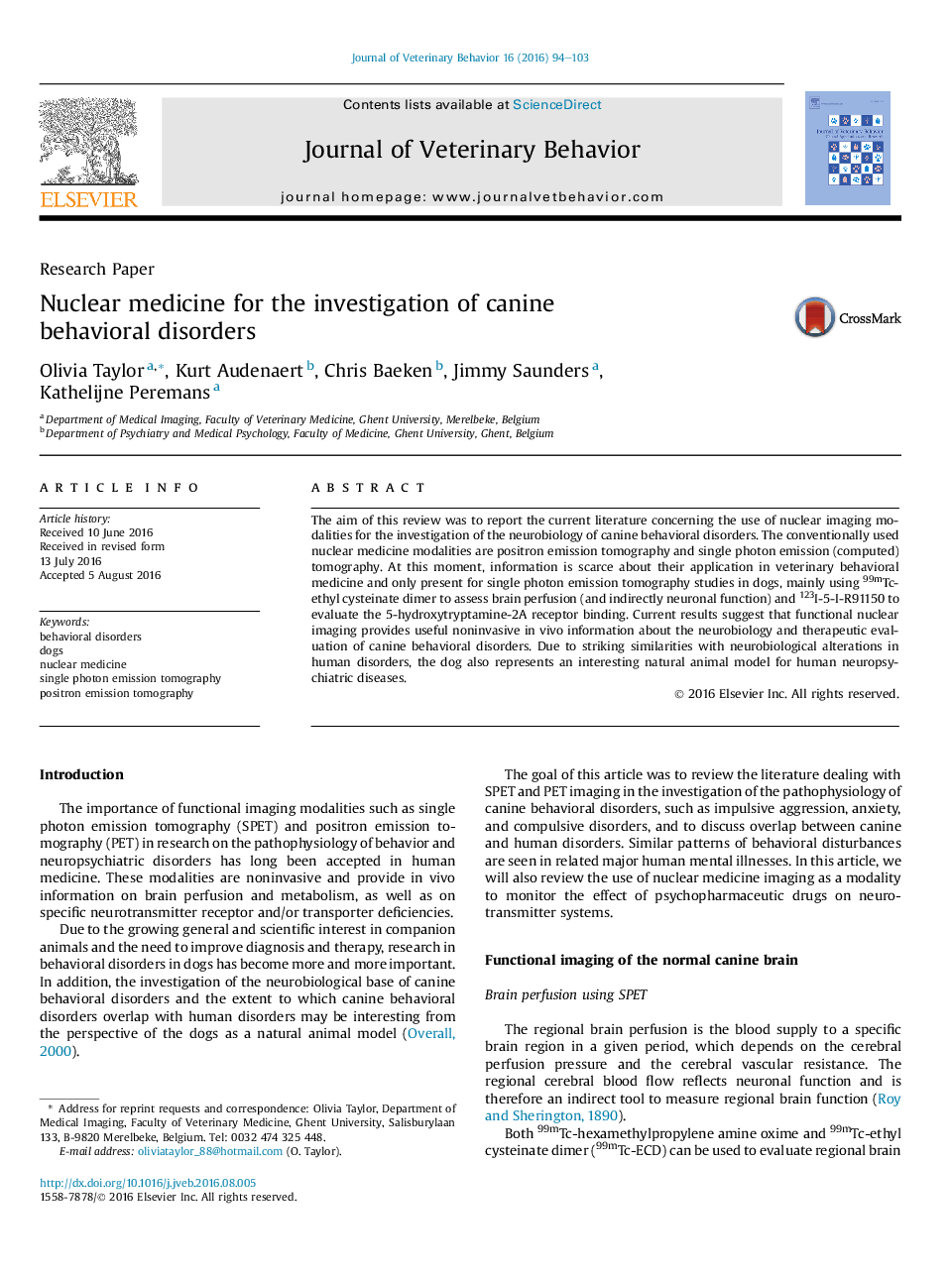| Article ID | Journal | Published Year | Pages | File Type |
|---|---|---|---|---|
| 5535888 | Journal of Veterinary Behavior: Clinical Applications and Research | 2016 | 10 Pages |
Abstract
The aim of this review was to report the current literature concerning the use of nuclear imaging modalities for the investigation of the neurobiology of canine behavioral disorders. The conventionally used nuclear medicine modalities are positron emission tomography and single photon emission (computed) tomography. At this moment, information is scarce about their application in veterinary behavioral medicine and only present for single photon emission tomography studies in dogs, mainly using 99mTc-ethyl cysteinate dimer to assess brain perfusion (and indirectly neuronal function) and 123I-5-I-R91150 to evaluate the 5-hydroxytryptamine-2A receptor binding. Current results suggest that functional nuclear imaging provides useful noninvasive in vivo information about the neurobiology and therapeutic evaluation of canine behavioral disorders. Due to striking similarities with neurobiological alterations in human disorders, the dog also represents an interesting natural animal model for human neuropsychiatric diseases.
Keywords
Related Topics
Life Sciences
Agricultural and Biological Sciences
Animal Science and Zoology
Authors
Olivia Taylor, Kurt Audenaert, Chris Baeken, Jimmy Saunders, Kathelijne Peremans,
